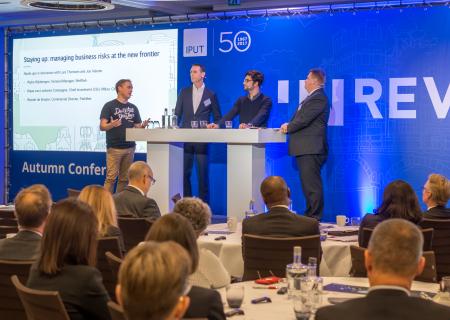360 Degree Vision
INREV embarks on major consultation project with members
This year INREV celebrates its 15th anniversary. We have achieved a great deal over this period, including global research, a suite of indices, industry guidelines and standards, a full programme of events and training. But since our start in 2003, the non-listed real estate industry and the broader asset class have gone through enormous changes. INREV has responded to many of these, but have we done enough?
To find out what our members want, we have been holding in-depth interviews with a representative number of you, as part of a project we are calling INREV Vision. We hope to find out if your needs have changed, and if so, what INREV should do to stay relevant for the next 15 years, both for existing and potential new members. The results of the interviews will be combined with our own internal review and contribute to the INREV Business Plan for 2019-2022.
There are certainly a lot of issues to discuss. For example, the business models and focus of many members have changed. Larger investors are using more JV and club-type structures, while fund managers are consolidating and offering more types of vehicles, as well as funds. INREV expanded its remit to reflect these changes in 2013, but has our focus shifted enough? In addition, more investors and managers now think of real estate as part of a wider real asset business. In the past, INREV made the decision to continue focusing on real estate and to exclude infrastructure, but does this still make sense? Furthermore, megatrends like urbanisation, technology and digitalisation, together with the increasing impact of regulations such as MiFID II, look set to grow in importance for our members.
Among the megatrends facing the sector, technology appeared to be the one that members are focusing on most strongly.
Interviews began in late February, with the goal of speaking to 60 members by the end of March. The original sample included 15 institutional investors, 28 investment managers and 12 service providers, reflecting the broad structure of the current membership. The interviews have been conducted by an external interviewer, Alex Catalano, and Claudia Kapp, a long-standing research analyst at INREV.
At the time of writing in early March, around 15 of the interviews had been held, so we were in a position to give a flavour of some the results. However, we must stress that these come from only a quarter of the eventual sample, and views have already proved wide-ranging.
We asked Alex and Claudia to provide some initial insights. First of all, they emphasised the high level of enthusiasm and interest shown by the interviewees. Both investors and managers agreed that INREV’s services and activities are highly valued, and that they have developed well in response to the evolving needs of the business. INREV’s standard-setting efforts were seen as particularly important, but the balance with our other activities was also felt to be about right. There was no great clamour for a stronger emphasis on different types of vehicles or for covering other types of real assets.
We hope to find out if your needs have changed, and if so, what INREV should do to stay relevant for the next 15 years.
So where could there be scope for change? Some desire was expressed for a shift in the balance of the membership away from managers toward investors, particularly if smaller investors could be attracted. In part this seemed to reflect a wider view that INREV sometimes appears more geared toward larger market players, for instance in the high degree of complexity in some surveys and documentation. Might it be possible to tailor services more to help smaller organisations?
The areas of regulation and taxation are clearly exercising members greatly at present. INREV’s efforts in the sphere of public affairs appeared to be appreciated, but it was felt that much work remains to be done in breaking down the barriers associated with specific jurisdictions, in order to create a level playing field within and across asset classes.
Among the megatrends facing the sector, technology appeared to be the one that members are focusing on most strongly. This is particularly due to the potential impact on occupier markets, but it is also seen as a significant issue for investors’ and managers’ own businesses.
Once again, please be aware of the health warning. These are just initial observations, and the eventual conclusions – due to be presented later this year – may have a different slant. In any event, I’d like to thank all those who have taken the time to share their views. We are listening.
Lonneke Löwik is CEO, INREV









